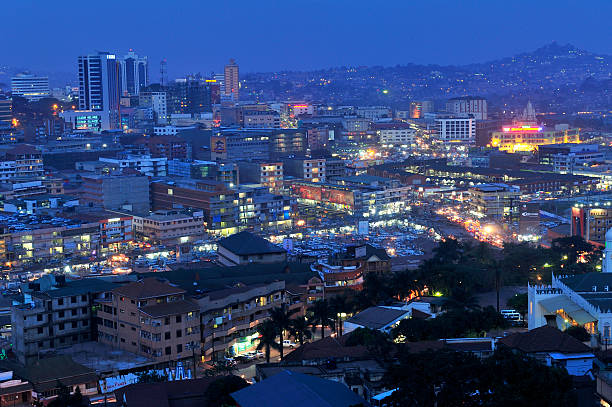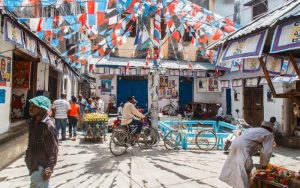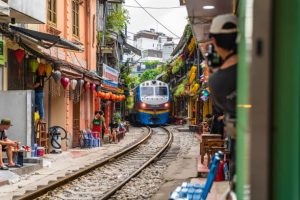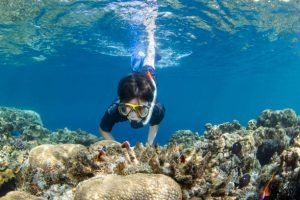Top Wildlife Photography Spots in Uganda After Getting Your Visa

Uganda is a country commonly known as the Pearl of Africa; it is also one of the most compensatory countries to nature and wildlife sightseeing. Due to its various landscapes such as savannahs, rainforests and mountain ranges, it offers a remarkable backdrop to the photographer who wishes to capture wildlife in the natural habitat. Uganda boasts of some of the most wildlife eye-catching sceneries in the African continent, which include iconic gorillas and chimpanzees as well as elephants, lions, and hundreds of bird species. To a lover of photography, the country can be described as a heaven where one finds a chance to take good shots every minute.
You should organize your travel formalities before you take off on your trip. The initial stage of starting your photography adventure is to get a Uganda visa. Luckily, the procedure of applying Uganda visa has been made a lot easier giving a chance to tourists around the globe to get into this marvelous destination with ease. After you get your visa sorted, the real adventure commences, to explore national parks, reserves and secluded destinations to be found in Uganda, which are considered as the best photography locations in Uganda. You can be an amateur photographer who wants to capture landscapes or a professional wildlife photographer who wants to document the unique behavior of animals in the wild but Uganda will not disappoint you and leave you with images that you will never forget.
The reason why Uganda makes a perfect destination to Photographers.
The geology is another aspect that puts Uganda at the forefront of East Africa. Uganda is a diverse destination in contrast to many other safari destinations which are predominantly open savannah. This diversity guarantees that photographers have the opportunity to shoot wildlife and capture various moods and styles of wildlife photography, to include thick rainforests in low light conditions and sunshine-basked golden savannahs.
Some key highlights include:
- It is the home of more than 1,000 bird species- a paradise to bird photographers.
- Mountain gorillas and chimpanzees have natural habitats where they can be photographed with rare primates.
- Wildlife of classic African savannah such as lions, elephants, leopards, giraffes, and hippos.
- Breathtaking nature like waterfalls, lakes and mountains that offer dramatic backgrounds.
- All those, combined, Uganda is one of the most rewarding wildlife and nature photography destinations.
The best wild animal photography in Uganda.
1. Bwindi Impenetrable National Park- Gorilla Photography Paradise.
- Bwindi Impenetrable National Park is the best place to be in case you are a wildlife photographer seeking rare and intimate experiences. It is likely to be one of the best places to go in Uganda as a photographer since it has nearly half of all the remaining mountain gorillas in the world.
- What to Shoot: Close shots of the gorillas in their families, the mothers and infants, and the forest, which is full of green vegetation.
- Photography Notes: Low light lenses will be employed because the rainforest canopy can cut the sunlight. Patience and be prepared to take abrupt steps. Adhere to the rules of respect distance in order not to disturb the gorillas.
- Why It Is Special: You can hardly find an opportunity in the world where you can take photographs of gorillas in the wild and so, this is a once in a lifetime experience.
2. Elizabeth National Park- Lions and Birdlife.
- Queen Elizabeth National Park is a very diverse ecosystem in Uganda and it has tree climbing lions in private sector called Ishasha. It is also a haven of birds with more than 600 species being documented.
- What to Photograph: Climbing trees Lions, elephants along the Kazinga Canal, and huge herds of flamingos.
- Photography Photography Tips: Golden hours (sunrise and sunset) are ideal in the achievement of dramatic silhouettes and warm color. Apply telephoto lenses on wildlife that is far.
- Special Feature: Hippos, crocodiles, and waterbirds can be photographed closely on the boat cruise of the Kazinga Channel.
3. Murchison Falls National Park -Its Might.
- This is the largest national park in Uganda and Murchison falls are famous due to the dramatic waterfall where Nile river crashes through the narrow fissure. The park is also favorable to wildlife.
- What to Photograph: Elephants, giraffes and antelopes and the great Murchison falls himself. The mixture of nature and a strong natural phenomenon creates active photographs.
- Photography Hints: Use long exposure to shoot the waterfall and short shutter speed to shoot wildlife in motion.
- Why It’s Unique: The park has both landscapes and a lot of big game with it hence it is the most versatile photography location in Uganda.
4. Kibale National Park- Monkey Haven.
- Kibale is called the Primate Capital of the World and over 13 species of primates are found in Kibale such as chimpanzees.
- What to Shoot: These types of shots are the chimpanzees hanging in trees, close-ups, and the landscape of forest.
- Photography Advice: To work with low light in thick forests, the ISO level should be high. You must be ready to move quickly.
- Special Feature: Chimpanzee tracking will provide hours of photographing time as opposed to the lesser gorilla visits.
5. The Lake Mburo National Park- Perfect Place to have a Close Encounter.
- Lake Mburo is a smaller park that is also ideal to photographers who would prefer a quiet and less-crowded experience.
- What to Photograph: Zebras, impalas, elands, and beautiful sceneries and acacia trees.
- Photography Advice: Since animals are usually nearer, mid-range zoom lens will do the job. Perfect in photographers who would not want to hurry during the sessions.
- Uniqueness of the Factor: Walking safaris will be able to provide ground level photography which will offer special views.
6. National Park Kidepo Valley Photography Kidepo Valley Remote Wilderness.
- The Kidepo Valley cannot be beaten by those who want to have dramatic sceneries and wild nature. It is found in the far northeast and has expansive savannahs, rocky hills and cultural photography experience with local Karamojong people.
- What to See: Cheetahs, ostriches, buffalo herds and expansive, untouched savannah sceneries.
- Tips on photography: Have a wide-angle lens on a landscape, and a telephoto lens on a predator. Light is in most cases sharp and there is little pollution.
- Why It’s Special: It is remote and less travelled, and has unspoiled photo experiences.
7. Ziwa Rhino Sanctuary- Rhino Photography.
- Ziwa Rhino Sanctuary is the only Uganda where one can take photos of wild rhinos. It is also an important conservation initiative.
- What to Shoot: White rhinos in open savannahs, close-ups shots of horns, and families.
- Photography Tips: Use low angles in order to emphasize the scale and the strength of the rhinos. The most appropriate contrast is provided by evening and morning light.
- Unique Factor: You can safely walk up to the rhinos and take photos during a guided rhino trekking.
8. Rwenzori Mountains- Landscape and Alpine Photography.
- The Rwenzoris also referred to as the Mountains of the Moon is the dream of landscape-loving photographers. Glaciers, aboriginal plants and rocky mountains form a surreal environment.
- What to Photograph: snow-topped mountains, unique alpine flowers and expansive mountain valleys.
- Photography Tips: A tripod is needed in landscapes. In places where they are allowed, drones provide incredible aerial shots.
- Why It’s Special: Not many people would think of having snow-capped mountains in equatorial Africa and your photos would become very special.
9. Mgahinga Gorilla National Park- Gorillas and Volcanoes in the Background.
- Another opportunity to take pictures of gorillas can be found in this park, only with the additional landscape of volcanoes.
- What to shoot: Gorillas against the volcanic slopes, golden monkeys and cultural photography of Batwa people.
- Photography Tips: Wide shots that involve both the dramatic landscape and wildlife are to be attempted.
- Special Feature: The rare shots at golden monkey.
10. Semuliki National Park- Photo A unique ecosystem.
- This park belongs to a greater ecosystem of the Congo Basin including hot springs, tropical forest, and endangered bird species.
- What to See: Shoebill storks, tropical special flora, and hot springs.
- Photography Ideal: Phases of photography Can be used to shoot a macro photograph of plants and insects and a long-distance photograph of birds.
- Why It Is Special: It seems more like Central Africa, as it gives diversity to your photography collections.
A Wildlife Photography Guide to Uganda.
- High season: Dry seasons (December to February and June to September) are the seasons when the skies are clear and the wildlife is easier to locate.
- Gear: Hold a telephoto lens (200600mm), a wide-angle lens and a backup battery.
- Permits: Gorilla and chimpanzee trekking must have permits, but these ought to be reserved beforehand.
- Guides: When you employ qualified guides, you are more likely to find some wildlife.
- Be mindful of Nature: Never break park etiquette, do not take flash photos of primates and observe safe distances.
How to Apply for a Uganda Visa
- You will require Uganda visa before visiting these amazing areas of photography in Uganda. This is easy and is done online.
- Go to the official portal and request a Uganda visa filling in the application form.
- Send the required documents, which are passport scans and passport photos.
- Pay visa fee through the internet and await approval, which may take few days of work.
- Upon approval, an electronic visa (e-visa) is sent to you which you can use on arrival.
- The travel agencies such as GoKite Travel may help with visa application and make sure that everything is done easily so that you can concentrate on the adventure.
Conclusion:
Uganda is among the most fulfilling destination countries in Africa among wildlife and landscape photographers. Whether it is the thrilling experience of the gorillas in Bwindi and the Mgahinga or the sheer force of the Murchison Falls and the wildest wilderness in Kidepo Valley, there is no part of Uganda that would not offer one the chance to capture the beauty of the moments. The diversity of ecosystems also means that you can add to the list of photography works, portraits, action, landscapes, and even culture-related shots.
To enjoy these treasures, the first activity to be done is securing your Uganda visa from dubai. As soon as you submit a visa application to Uganda and arrange a travel plan, the trip of the lifetime is going to begin. Uganda has the right equipment, timing and respect to nature and this will ensure that the images are your lasting memories. To have a hassle free traveling experience, such companies as GoKite Travel will be willing to assist in the organization of the process including visa, safari packages among others and make the trip as smooth as possible.




